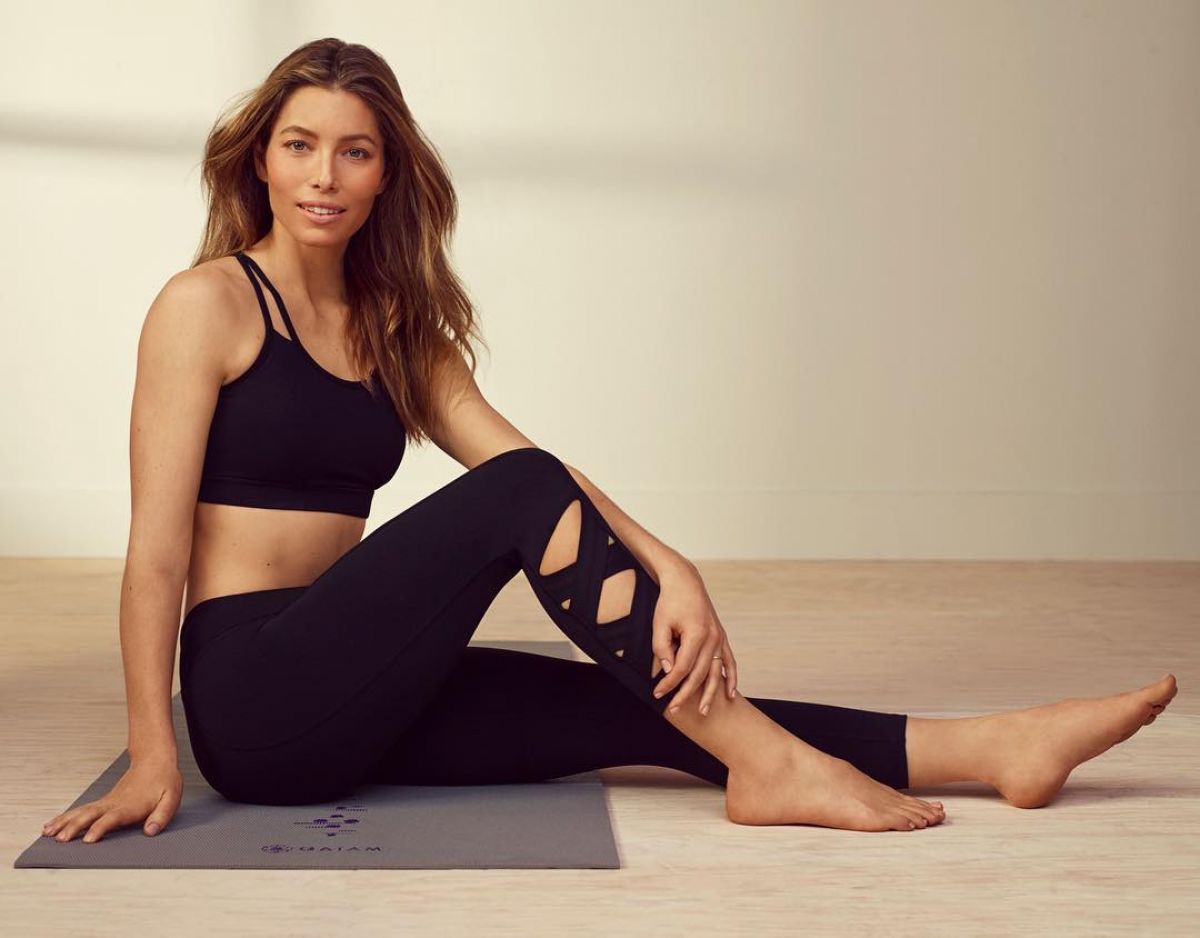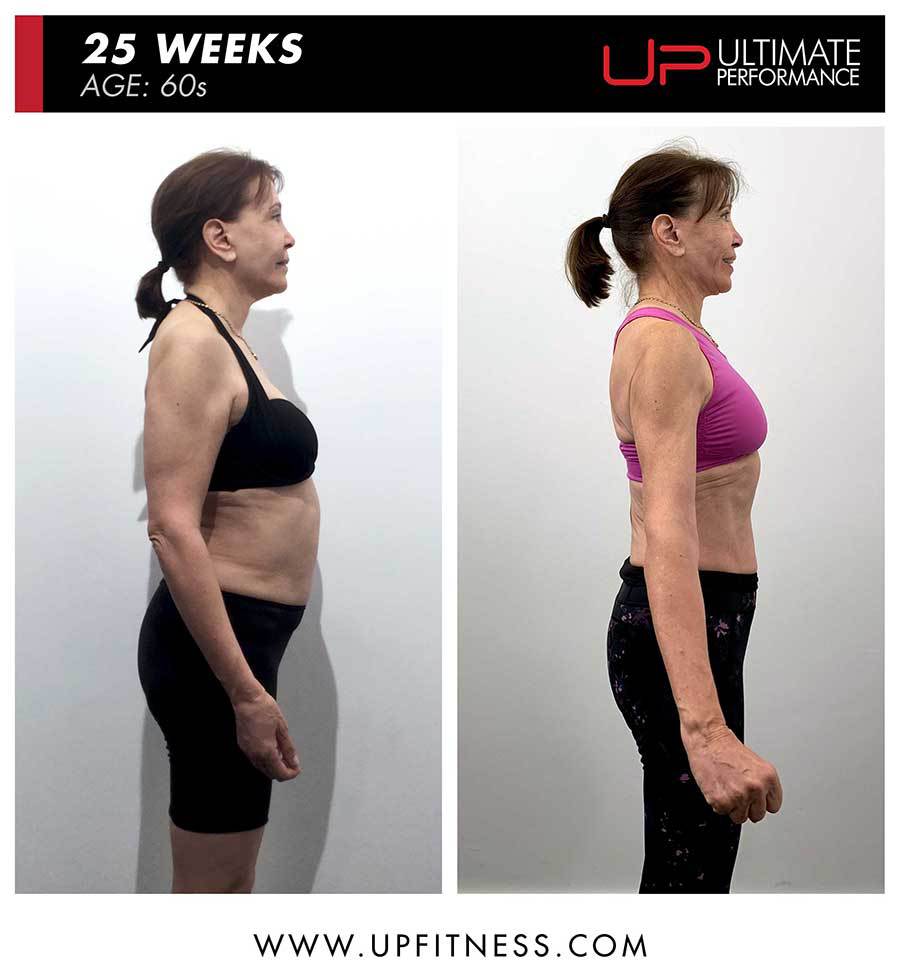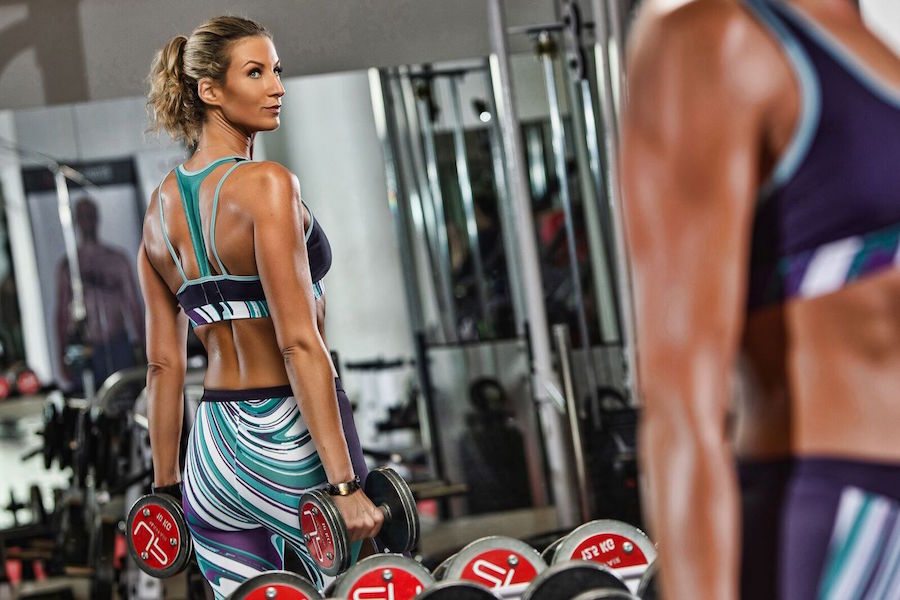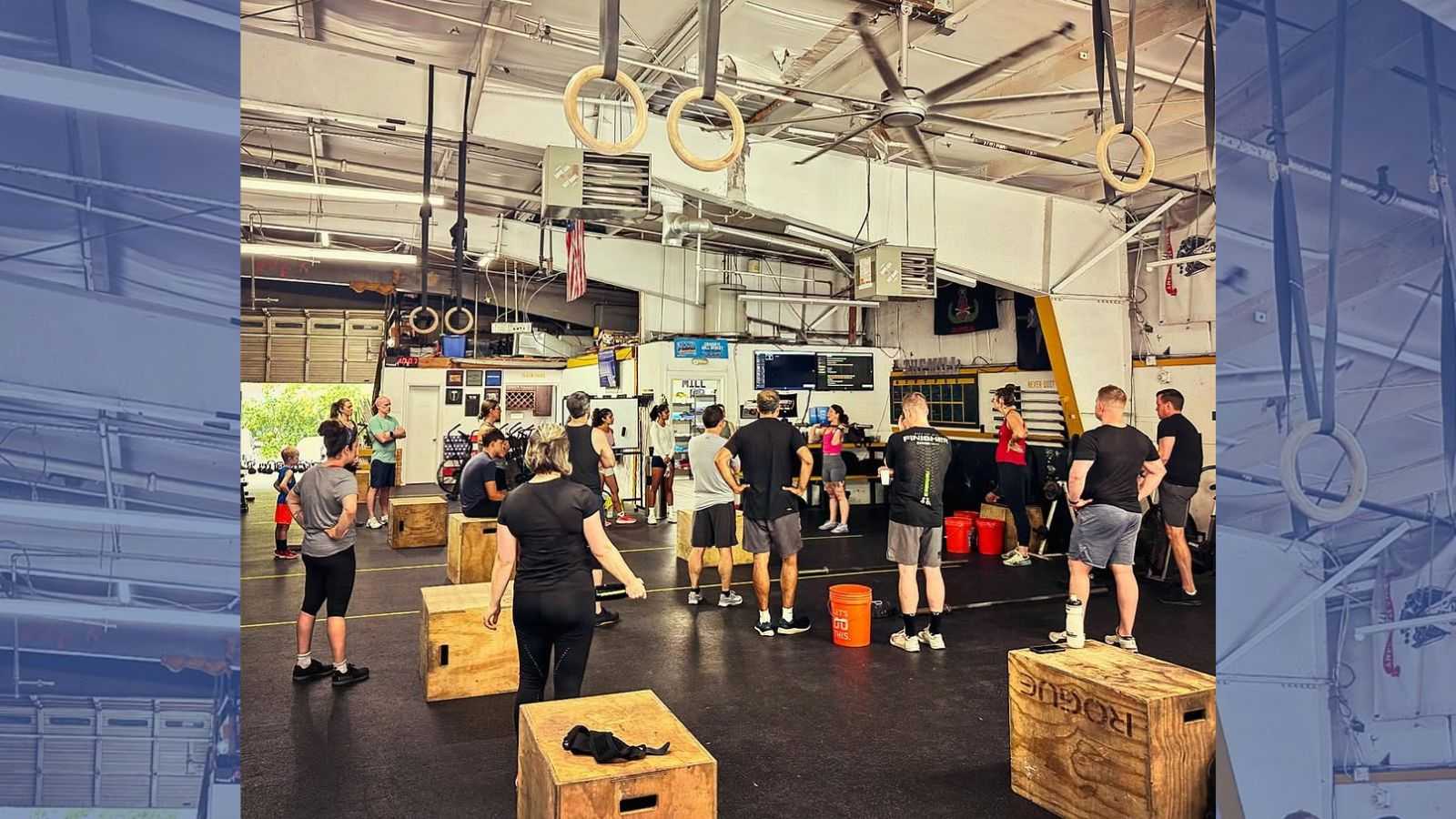The fear of becoming ‘bulky’ from weight training remains deeply rooted for so many women.
Despite strength training increasing in popularity in recent years the increased popularity of strength training in recent years, the misconception that lifting weights leads to overly muscular or masculine physiques still prevents countless women from stepping confidently into the weight room.
Why won’t this myth die? If you scroll through Instagram or YouTube, you’re bombarded with conflicting messages – trainers pushing super-high reps with tiny weights on one side, bodybuilders flexing huge biceps on the other. It’s no wonder so many women still aren’t sure who or what to believe.
But the truth is, lifting weights won’t automatically make you bulky. The female body simply doesn’t work that way.
This article will show you why – exploring the science, the benefits of weight training for women, and the best way to lift weights without worrying about adding bulk.
Table of Contents
ToggleWhat ‘bulky’ really means
Part of the confusion around women and weight training comes from how subjective the term ‘bulky’ can be. While one woman might picture bulky as excessive muscle mass or a masculine shape, another might simply see it as a look that’s slightly more muscular than her own preference.
This subjective perception is often shaped by media portrayals, online influencers, and outdated fitness industry messaging, rather than clear, evidence-based definitions. As a result, many women remain uncertain and even fearful about how their bodies might change when incorporating resistance training into their routines.
Scientifically speaking, achieving significant muscle hypertrophy – the growth of muscle fibres – requires consistent, targeted, and high-intensity training alongside a specific nutritional approach involving a calorie surplus. For women, the naturally lower levels of testosterone – the hormone primarily responsible for muscle growth – make it physiologically challenging to build large volumes of muscle mass quickly or accidentally [2].
It’s important to recognise that what many women associate with feeling or looking ‘bulky’ often relates to body composition rather than muscle mass alone. If muscle growth occurs without a simultaneous reduction in body fat, the overall shape may temporarily appear larger, leading to concerns about bulkiness. However, this is typically a short-term situation that can easily be managed through balanced training and nutrition strategies designed to promote fat loss alongside moderate muscle development.

In other words, true bulkiness – substantial and rapid muscle growth – is highly unlikely without deliberate effort, precise dietary control, and often genetic predisposition. For the vast majority of women, resistance training results in leaner, more defined muscles, creating the athletic, ‘toned’ look they aspire to rather than unwanted size.
How easy is it for women to become ‘bulky’?
Despite clear evidence to the contrary, many women still worry that lifting heavier weights might quickly lead to unwanted muscle mass. This fear continues to persist due to misunderstandings around how muscle growth actually happens – especially for women.
Why muscle growth doesn’t happen overnight
Building significant muscle mass, known as muscle hypertrophy, is a gradual process that requires precise conditions. It involves regular, consistent training with progressively heavier loads, along with targeted nutritional support – particularly consuming more calories than your body burns, combined with sufficient protein intake [3].
Additionally, women’s hormonal profiles, notably lower testosterone levels compared to men, naturally limit how quickly muscle mass can accumulate [4]. While studies indicate that relative muscle gains between men and women can be similar under equivalent training conditions, the absolute amount of muscle gained is typically far smaller in women due to these hormonal differences [5].
The reality behind feeling ‘bulky’
It’s worth noting that some women might initially perceive themselves as becoming ‘bulkier’ when beginning resistance training. Often, this temporary perception relates to increased water retention or minor muscle swelling from new training stimuli – both normal, transient responses known as biofeedback [6]. Moreover, gaining muscle beneath existing body fat can initially create the illusion of increased bulkiness. This effect usually resolves as training progresses and fat loss occurs, especially when following structured approaches like German Body Composition training for maximum muscle gain and fat loss, revealing a leaner, more defined physique.
An analogy often used by trainers is that worrying about becoming too muscular after a few weeks or even months of lifting is similar to worrying about running casually and becoming an Olympic sprinter overnight. Significant changes require dedicated effort, specific methodologies, and often years of focused training.
How women can avoid unwanted ‘bulk’
To effectively manage body composition and ensure muscle growth contributes to a leaner, more toned physique, the most critical factor is nutrition. Maintaining a balanced diet and slight calorie deficit alongside regular resistance training encourages fat loss while preserving and slightly increasing muscle tissue – this approach consistently delivers the toned appearance most women seek [7].

For example, one of our Ultimate Performance clients, Wendy, initially had similar concerns about unwanted bulkiness. However, by committing to structured weight training combined with proper nutritional guidance, she achieved a remarkable transformation, losing 28kg (62lbs) and significantly reducing her body fat without gaining excessive muscle size.
In short, substantial muscle growth is neither accidental nor easy. Instead, women typically experience improved strength, greater muscular definition, and a healthier, more athletic appearance when incorporating resistance training into their lifestyle.
Benefits of weight training for women
Resistance training offers powerful health and aesthetic benefits beyond simply improving muscle ‘tone’. Regularly incorporating weights into a training routine has proven to significantly enhance women’s quality of life and long-term health outcomes.
1. Increased muscle strength and longevity
Resistance training uniquely improves muscle strength and function, directly translating into better performance in everyday activities. Importantly, muscular strength is closely linked to longevity, with higher levels significantly reducing mortality risk in older adults [8].
Women particularly benefit from maintaining muscle mass, especially as they age. Menopause triggers hormonal changes that accelerate sarcopenia – the age-related loss of muscle. Strength training actively counters this, helping women retain strength, mobility, and independence for years longer [9] – as explored in our guide to 10 Golden Rules to Weight Training for Over 40s.
2. Boosted psychological health and self-confidence
Regular weight training significantly enhances psychological well-being, as covered in our article on 8 Quick Tips Women Need to Build Strength and Confidence. Research consistently links strength training to improved self-confidence, social interaction, mood stability, and reduced symptoms of depression and anxiety in women across all age groups – including postpartum mothers and older adults [11,12].
“My life has completely changed. I went down 17kg and I’m in the best shape of my life”
Our client, Nur, shows the impact that targeted weight training and nutrition can have on your mental health and emotional well-being. She’d gone through two tough years losing her mother and grandmother, which led to a period of depression where she fell into social isolation and poor eating habits. Here, Nur explains how exercising, lifting weights, and fixing her diet with the help of Ultimate Performance has transformed her mentally and physically.
3. Protection against osteoporosis
Bone density naturally declines with age, but women face a heightened risk of osteoporosis after menopause. Resistance exercise applies controlled mechanical stress to bones, stimulating bone-building cells (osteoblasts) and enhancing bone mineral density. This adaptation dramatically reduces the risk of fractures and improves overall skeletal health [10].
4. Reduced metabolic disease risk
Metabolic syndrome – a cluster of conditions including high blood pressure, type 2 diabetes, elevated cholesterol, and obesity – is associated with significant health risks. Weight training effectively targets the underlying issue of poor body composition by promoting muscle growth and reducing excess body fat, lowering the risk of these chronic conditions [13].
Our 68-year-old client Sybil was struggling with very similar issues – painful arthritis made it hard to exercise, and her cholesterol and blood pressure were getting worse.
By incorporating regular resistance training into her lifestyle with Ultimate Performance, she’s been able to transform her metabolic health to the point where she no longer needs medication to manage her cholesterol or blood pressure.
5. Enhanced neural and functional adaptations
Strength training doesn’t just build muscle – it fine-tunes neural pathways, enhancing the efficiency and control of movement patterns. These neural adaptations translate to greater agility, improved coordination, and reduced risk of injuries, making everyday tasks simpler, safer, and more effortless [14].
6. Improved body composition and aesthetics
Many women pursue weight training aiming for a ‘toned’ appearance – lean, defined muscles without excessive bulk. Resistance training is uniquely effective at reducing subcutaneous fat, especially when combined with adequate protein intake and balanced nutrition, helping create a tighter, more sculpted look [15].
7. Increased resilience to stress
Resistance training positively affects the body’s response to acute stress. It promotes improved cardiovascular resilience, healthier coping mechanisms, and quicker recovery from daily stresses – benefits extending beyond physical fitness into broader life management and emotional stability [16].
8. Improved hormonal balance and fertility support
Polycystic Ovary Syndrome (PCOS), affecting up to 20% of women, is linked to hormonal imbalances that impact fertility, metabolism, and overall health. Resistance training significantly aids in managing PCOS symptoms, improving insulin sensitivity, facilitating healthy weight loss, and supporting better reproductive health outcomes [17,18].
Ultimate Performance client Kelly explains how she was able to overcome her PCOS symptoms which had made it hard to lose any weight in the past to trim down 15kg (33lbs) over 18 weeks.
Ultimately, weight training for women is about much more than aesthetics – it is a holistic approach that improves physical strength, metabolic health, emotional resilience, and overall well-being
How to lift weights without getting bulky
The key concern for many women who start resistance training is understanding exactly how to train effectively without gaining unwanted muscle mass. Achieving the lean, toned appearance most women aspire to involves careful attention to training style, nutrition, and realistic goal-setting.
Choose clear goals focused on your body and lifestyle
Because perceptions of ‘bulkiness’ vary significantly, it’s essential to set clear, personalised goals at the outset. Defining precisely what ‘toned’ or ‘athletic’ means to you makes it easier to structure your training program accordingly.
Rather than comparing yourself to unrealistic fitness images from social media, focus on incremental, sustainable improvements in your strength, body composition, and overall health. Effective resistance training tailored to your specific goals provides the foundation for genuine and lasting transformation.
Work with a professional trainer
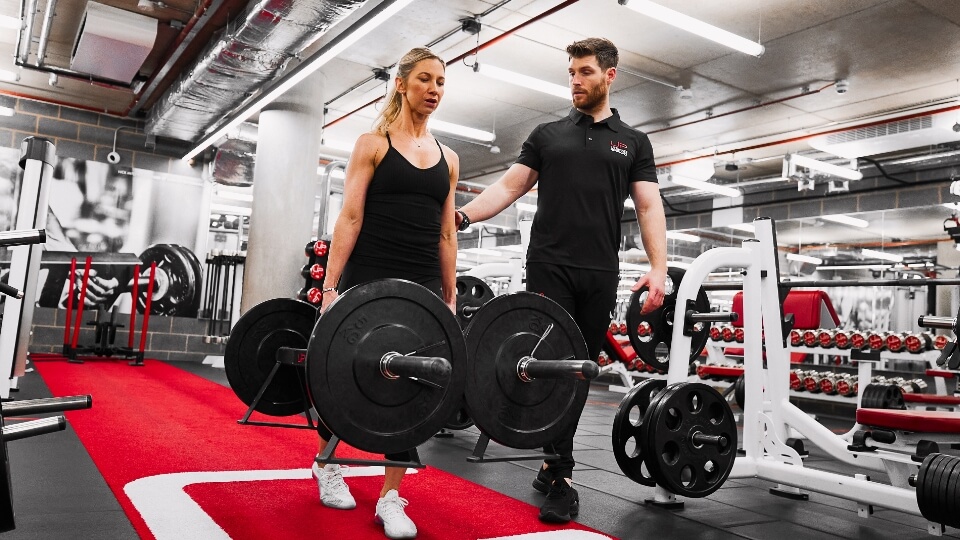
A skilled trainer helps you understand how your body responds to resistance training, adjusts your workouts as you progress, and ensures you maintain correct form and appropriate training intensity – key factors in achieving muscle tone without excess growth.
Focus on moderate–to-heavy weights and controlled volume
The type of training and the intensity of the exercises you choose directly influence your results. Moderate-to-heavy weightlifting performed within the 8-12 repetition range is ideal for achieving strength and lean muscle definition without significant hypertrophy [20].
Excessive training volume – very high repetitions or overly frequent training sessions targeting the same muscle groups – can sometimes lead to unwanted swelling or perceived bulkiness. Balanced, structured programming ensures muscles are challenged effectively without pushing towards hypertrophy-dominant routines designed for maximum size.
Prioritise your nutrition for optimal body composition
Nutrition is crucial in determining whether you develop a bulky or lean appearance. Muscle mass alone rarely makes women look bulky – usually, the issue is related to overall body composition, particularly body fat levels.
Maintaining a moderate calorie deficit while consuming sufficient protein supports muscle maintenance and growth, whilst simultaneously promoting fat loss. This dietary approach ensures you can strip away fat from so the muscle definition underneath is more visible.

Veena lost an incredible 33kg training with weights for the first time in her life.
Veena was able to lose 33kg (72lbs) with Ultimate Performance through focusing on a high-protein diet which was predominately made up of whole foods and natural ingredients. Combined with three hours of resistance training with her trainer each week, she transformed her whole body shape and composition with zero concerns about excessive bulkiness.
By approaching resistance training intelligently – with clear goals, strategic training methods, and appropriate nutrition – women can confidently sculpt a toned, strong physique without fear of becoming bulky.
Common fears about lifting weights: your questions answered
Many of the concerns that prevent women from lifting weights revolve around misconceptions and confusion from conflicting information. Here are clear, evidence-based answers to some of the most common questions women have about resistance training.
“Will lifting weights make my thighs bigger?”
This question arises often, particularly around exercises like squats and lunges. Initially, certain muscle groups, including the thighs, can temporarily feel or appear slightly larger due to increased muscle glycogen storage and water retention after new training stimulus. This temporary effect usually reduces as the body adapts.
Importantly, targeted resistance training combined with a balanced diet typically leads to a more toned appearance, reducing fat stores around the thighs and resulting in leaner, stronger-looking legs.
If this is an issue for you, here’s a deeper look at female fat loss and lower body stubborn fat.
Women who regularly train at Ultimate Performance consistently report reduced thigh circumference alongside improved muscle definition.
“What if I start lifting weights and feel bulky initially?”
Feeling bulkier at the start of a resistance training program can be due to temporary fluid retention within muscle tissues – a natural short-term response known as training-induced swelling. Additionally, gaining muscle underneath existing fat can briefly create the impression of increased size.
However, these initial changes are typically short-lived. As you continue to train and improve your nutritional approach, body fat decreases, muscle definition increases, and the overall result is a leaner, more athletic appearance. The key is patience and consistency, allowing your body the necessary time to adapt and improve.
“Should women over 40 do strength training?”
Absolutely. In fact, resistance training becomes even more essential for women as they age. Hormonal shifts around menopause can significantly accelerate muscle loss, bone density decline, and metabolic slowdown. Regular strength training directly counters these issues, preserving muscle mass, improving bone strength, and boosting metabolism.
Research consistently shows that women who engage in structured weight training after 40 experience fewer menopausal symptoms, improved mobility, reduced fracture risk, and enhanced overall well-being [21]. At Ultimate Performance, many female clients over 40 have transformed their quality of life through structured, tailored resistance training programs.
“Can muscle turn into fat if I stop training?”
This widespread myth has no basis in biology. Muscle and fat are entirely separate tissues, and one cannot turn into the other. However, ceasing regular exercise without adjusting your diet appropriately can result in muscle loss combined with increased body fat, giving the illusion of muscle turning into fat.
The best way to avoid this scenario is to maintain a sustainable level of physical activity, coupled with balanced nutrition – even during periods when structured training is reduced. Consistency is key to preserving your body composition and the health benefits gained through resistance training.
“Is it possible to train for ‘tone’ rather than size?”
The term muscle tone is widely used in the fitness world – but it’s technically a misnomer. What most people mean by “tone” is visible muscle definition with minimal body fat – a lean, sculpted look that highlights shape without bulk.
Achieving this look doesn’t require a completely different approach to training. It’s not about lifting tiny weights for endless reps. In fact, the opposite tends to be more effective. Moderate-to-heavy resistance training using controlled sets (typically 8–12 reps per set), combined with progressive overload and a well-structured program, builds lean muscle in a balanced way.
The real driver of visible definition is body composition – specifically, reducing fat so the muscle underneath becomes more apparent. That’s why a slight calorie deficit, consistent training, and adequate protein intake are essential. This approach helps reveal the muscle shape you’ve built without increasing size beyond what’s desired.
In short, you don’t “tone” a muscle – you build it and reduce the fat around it. The more precisely you train and eat for that outcome, the more control you’ll have over how your physique looks.
Final word: strong and confident – not bulky
The fear of becoming ‘bulky’ through weight training remains one of the most persistent misconceptions in women’s fitness. As we’ve covered, the reality backed by both science and real-world client outcomes is clear: lifting weights does not automatically lead to unwanted muscle size or a masculine physique.
Instead, resistance training provides a powerful tool to shape your body precisely how you want it. For the overwhelming majority of women, structured, consistent strength training, combined with targeted nutritional strategies, delivers a leaner, stronger, healthier body – exactly the opposite of bulky.
Ultimate Performance has coached thousands of women through this exact process, guiding them from initial uncertainty and misconceptions to clarity, confidence, and extraordinary results. Whether your goals include fat loss, improved strength, better health, or simply greater confidence, intelligent resistance training is essential.
By dispelling myths, understanding the science, and training effectively, every woman can enjoy the empowering benefits of strength training without fear. The evidence is clear, the method is proven, and the outcome is compelling – a strong, defined, and confident body you can feel proud of.
Ready to start your own transformation? Speak with an Ultimate Performance expert today, and let’s create a personalised program that delivers the results you deserve – without worrying about getting bulky.
References
- LeCheminant, J. D., et al. (2012). Effect of resistance training on body composition, self‑efficacy, depression, and activity in postpartum women. *Scandinavian Journal of Medicine & Science in Sports, 24*(2), 414–421. https://pubmed.ncbi.nlm.nih.gov/22738284/
- Dhabhar, F. S. (2018). The short‑term stress response – Mother nature’s mechanism for enhancing protection and performance under conditions of threat, challenge, and opportunity. *Frontiers in Neuroendocrinology, 49*, 175–192. https://pubmed.ncbi.nlm.nih.gov/29596867/
- Kruger, J., et al. (2006). Trends in strength training – United States, 1998–2004. *MMWR Morbidity and Mortality Weekly Report, 55*, 769–772.
- O’Dougherty, M., et al. (2012). Young women’s physical activity from one year to the next: What changes? What stays the same? *Translational Behavioral Medicine, 2*(2), 129–136.
- Ratamess, N. A., et al. (2008). Self‑selected resistance training intensity in healthy women: The influence of a personal trainer. *Journal of Strength and Conditioning Research, 22*(1), 103–111.
- Focht, B. C. (2007). Perceived exertion and training load during self‑selected and imposed‑intensity resistance exercise in untrained women. *Journal of Strength and Conditioning Research, 21*(1), 183–187.
- Hubal, M. J., et al. (2005). Variability in muscle size and strength gain after unilateral resistance training. *Medicine & Science in Sports & Exercise, 37*(6), 964–972.
- Volaklis, K. A. (2015). Muscular strength as a strong predictor of mortality: A narrative review. *European Journal of Internal Medicine, 26*, 303–310.
- Messier, V., et al. (2011). Menopause and sarcopenia: A potential role for sex hormones. *Maturitas, 68*(4), 331–336.
- Cholewa, J., et al. (2018). Training on muscle growth, body composition, and performance in collegiate women. *Journal of Strength and Conditioning Research, 32*(6), 1511–1524.
- Alswat, K. A. (2017). Gender disparities in osteoporosis. *Journal of Clinical Medicine Research, 9*(5), 375–381.
- Hong, A. R., & Kim, S. W. (2018). Effects of resistance exercise on bone health. *Endocrinology and Metabolism, 33*(4), 435–444.
- Dionigi, R. A. (2007). Resistance training and older adults’ beliefs about psychological benefits: the importance of self‑efficacy and social interaction. *Journal of Sport and Exercise Psychology, 29*(6), 723–746.
- Bemben, M. G., & Murphy, R. E. (2001). Age‑related neural adaptation following short‑term resistance training in women. *Journal of Sports Medicine and Physical Fitness, 41*(3), 291–299.
- Kobo, O., et al. (2019). Normal BMI can rule out metabolic syndrome: An Israeli cohort study. *Medicine, 98*(9), e14712.
- McDonald, L. (2017). *The Women’s Book*. Lyle McDonald Publishing.
- Staron, R. S., et al. (1991). Strength and skeletal muscle adaptations in heavy‑resistance‑trained women after detraining and retraining. *Journal of Applied Physiology, 70*(2), 631–640.
- Chovanec, L., & Gröpel, P. (2020). Effects of 8‑week endurance and resistance training programs on cardiovascular stress responses, life stress and coping. *Journal of Sports Science, 38*(15), 1699–1707.
- Harrison, C. L., et al. (2012). The impact of intensified exercise training on insulin resistance and fitness in overweight and obese women with and without polycystic ovary syndrome. *Clinical Endocrinology, 76*(3), 351–357.
- Hakimi, O., & Cameron, L. C. (2017). Effect of exercise on ovulation: A systematic review. *Sports Medicine, 47*(8), 1535–1548.
- Friedman, J. E., et al. (1991). Regulation of glycogen resynthesis following exercise: Dietary considerations. *Sports Medicine, 11*(4), 205–220.
The post <strong>Does lifting weights really make you bulky? The truth for women</strong> appeared first on Ultimate Performance Blog.
Source link






